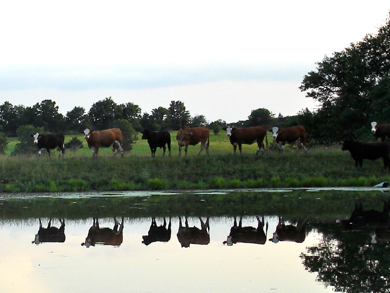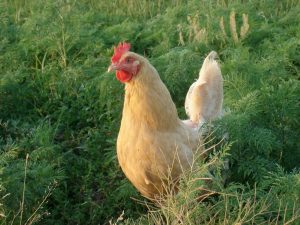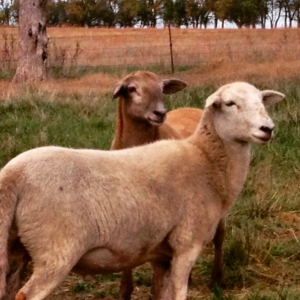
We have learned over many years on the land that our grasses are better managed, our health better served, and our planet better treated when we utilize grazing animals to nurture our grasslands the way nature intended.
There are few better nutrient sources than high-quality proteins raised on our native grasses. Plus, utilizing rotations of perennials and annuals on our non-native-grass croplands helps improve the soil, reduces not only costs but also fossil fuel inputs, and allows us to keep our animals healthy such that low-dose antibiotics and other questionable feed additives are not needed.
Grass-finished Beef
Mettenburg Farm cattle are raised on the finest native and perennial cool-season grasses available. Their diet may be supplemented with our high-protein hydroponic wheat and barley grass fodder in times of drought. They are 100% grass-finished, meaning no corn or soy is ever used in their diet – even in the latter months of growth. Therefore, our beef is never in a feedlot environment and is never treated with preventative antibiotics or added hormones. Should we need to treat an animal for illness, we remove that animal from our supply of consumer beef.

We use holistic managed grazing practices, moving our livestock continuously through the seasons and allowing them to graze fresh forages year-round. These practices provide optimum nutrition while preventing overgrazing and maintaining the health of our pastures and the environment.
We raise Simmental cattle of the original German-Swiss-Austrian Fleckvieh line, one of the oldest breeds in the world. Originating in Western Europe, the Simmental were officially brought to America from France in 1967. Through the years, we have also included Angus genetics for a portion of the herd to shorten maturity time, provide hybrid vigor and additional carcass quality.
Our beef is processed locally by family-owned businesses and packaged in convenient cuts for family enjoyment. Our standard cut is primarily boneless because of storage space considerations for both our efficiency and your convenience.
Chicken and Eggs
While we have raised rock-cornish cross broiler chickens regularly in the past, we have recently begun buying them from other local producers of pastured poultry. Our other partners raise their pastured poultry using the same methods as we use.

As soon as chicks are fully feathered at around 3-4 weeks of age, they are able to remain outside with access to portable or permanent shelter for inclement weather and shade. Some producers use portable pens to move chickens everyday. Some producers havededicated larger fields planted in a variety of high quality forages for the growing season a more permanent centralized shelter. Our chickens are processed by Anco Processing, a small poultry processor located in Garnett, Kan.
We maintain a small flock of laying hens consisting of a variety of brown egg layers: Bovan Browns, Rhode Island Reds, Barred Rocks, Black Sex-Linked. Layers are allowed to be totally free-range whenever possible. When predator pressure (foxes, coyotes, hawks, owls, raccoons) is higher than our guardian dogs (Sweetie Pie and Rupert) can control, we use electric netting for a protective perimeter around their portable shelter and nesting house and move them around the pastures.
The constant availability of green forage creates a nutrient dense egg with an intensely orange yolk consistent with high beta carotene and vitamin A content. The flock also enjoys eating all the bugs they can catch!
We are working on developing a secure portable hen system that can be moved to more distant pastures three weeks behind the moving cattle herd. At about 3 weeks, the fly and parasite larvae in manure are developed enough to provide quite a feast for chickens and other birds.
Pastured Lamb

Our flock of Katahdin sheep (a.k.a. “hair sheep) are a smaller-framed breed than wool sheep and are known for their delicately
flavored meat as well as their hardiness and disease resistance. Because they do not possess lanolin glands as do wool sheep, Katahdin lamb never acquire the strong “mutton” flavor many consumers find objectionable.
Katahdin ewes lamb in the spring and the lambs are weaned late summer or early fall. At that time, lambs may be supplemented with whole oats, barley, or non-GMO corn depending upon the quality and quantity of forages available to them in nearby pastures.
Recently, we have been working on development of a “flerd” (flock + herd) whereby sheep become bonded to cattle and remain in close proximity for predator protection while grazing. We tested the “flerd” during September-December of 2015 with some success. No losses to predators were sustained as sheep moved through more remote pastures with the cattle.
Pastures benefit greatly from multi-species grazing as sheep will eat (indeed prefer) many of the thorny, invasive brush species and broad-leaf weeds, as do goats. The ability of smaller ruminants to “escape” from standard fencing into neighboring crop fields remains a challenge. Cattle are easily contained with one strand of electric wire. Sheep or goats – not so much!